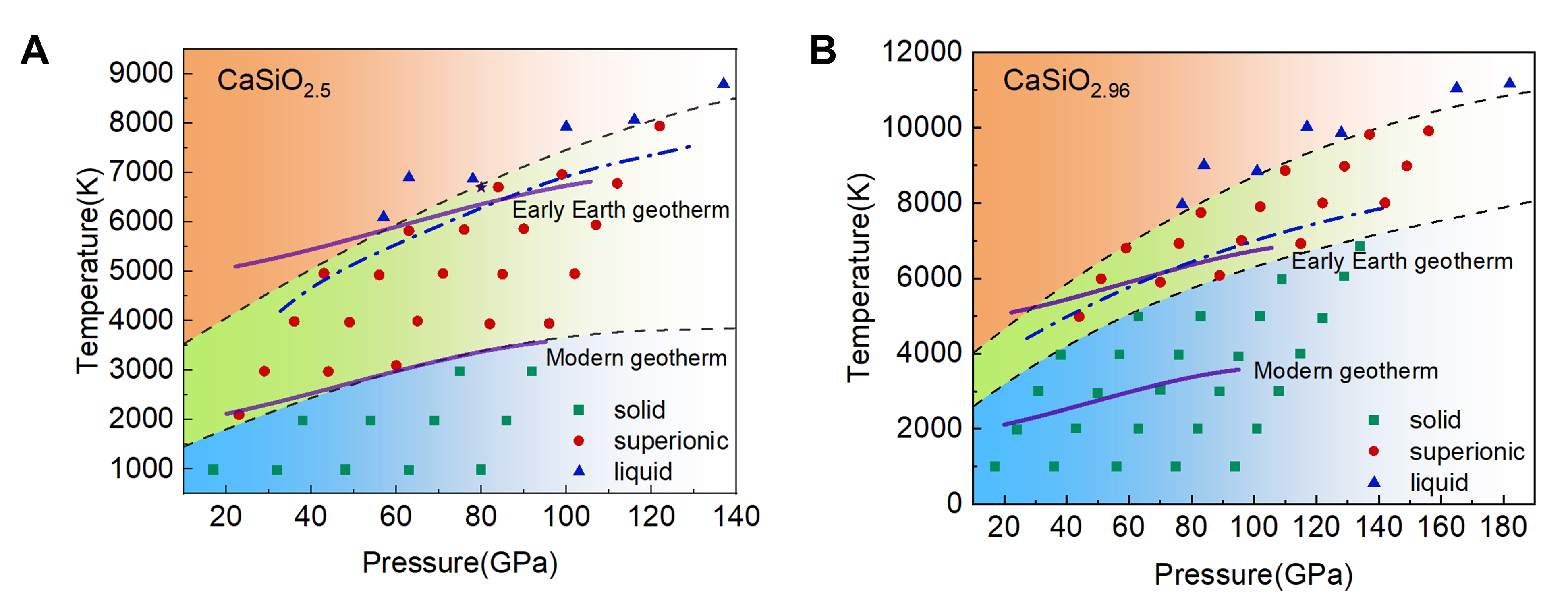
A recent pioneering study led by Dr. Duck Young Kim from HPSTAR revealed the superionic behavior of oxygen-deficient davemaoite under Earth’s early mantle conditions and its role in deep-Earth oxygen cycle. This study is published in Science Advances, not only reshapes our understanding of the oxidation cycle in deep Earth but also opens new avenues for exploring Earth’s early mantle dynamics and geochemical evolution.
Using machine learning molecular dynamics simulations, the research reveals that oxygen-deficient davemaoite is stable exhibits superionic behavior under extreme conditions. In superionic state, O²⁻ diffuses freely within a stable Ca and Si lattice, enhancing the electrical conductivity. Predicted phase diagrams in this study indicated that higher vacancy concentrations could broaden the superionic phase region, increasing the diffusion with greater oxygen mobility.
This discovery implies that oxygen-deficient davemaoite could be the reservoir of mobile oxygen in early Earth, which plays a critical role during early mantle oxidation process. The mobile O2- could react with metal iron and form oxidized compounds such as FeO2, establishing a deep-Earth oxygen cycle. This study provides fresh insights into the geodynamic processes, deep oxygen cycling, and geophysical properties of early Earth, paving alternative way for studying geophysics and planetary science.

Caption: Phase diagrams of oxygen-deficient davemaoite structures. (A) Phase diagram of CaSiO2.5. (B) Phase diagram of CaSiO2.96. The green squares, red circles, and blue triangles represent solid states, superionic states, and liquid states, respectively.
近日,北京高压科学研究中心(HPSTAR)的Duck Young Kim研究员课题组在深部地球研究方面取得重要进展。研究团队通过机器学习分子动力学模拟,发现了含有氧缺陷的毛钙硅石在极端条件下表现出的氧离子的超离子扩散行为。研究表明,含氧缺陷的毛钙硅石可能成为深部地球中游离氧的主要来源和载体,对地球深部的氧循环及早期地幔的氧逸度演化具有关键的调控作用,促进并影响了大氧化事件的发生。该研究为早期地球演化、核幔边界物质交换及地球深部氧循环提供了新的思路和见解。相关成果以 “Superionicity of oxygen-defecient davemaoite and its impact on the deep-Earth oxidation cycle”为题发表在《Science Advances》期刊上。